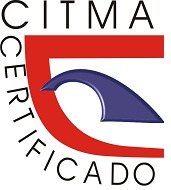Estimation of the Degree of Lung Affection by COVID-19 through Supervised Classification of the X-Ray Image
DOI:
https://doi.org/10.5281/zenodo.5545908Keywords:
Machine learning; Supervised classification; COVID-19; x-ray images; Digital image processingAbstract
This work presents the proposal of a simple quantitative index of lung affection derived from chest x-ray images in patients diagnosed with COVID-19 in an advanced stage of the disease. The index is obtained from an algorithm that combines digital image processing and machine learning methods for the segmentation of the lung region, the evaluation of its quality and the classification of each pixel of the segmented lung image.
The results achieved in the experiments carried out on images of healthy patients and those affected by COVID-19 showed high values of sensitivity and specificity in the classification. The study of the variation of the values of the proposed index in time series of images from patients with COVID 19 admitted to the intensive care units of hospitals in Havana, Cuba, showed a relationship between these variations with the evolution of the disease and the patients’ response the proposed index as an indicator of the effectiveness of the treatments and protocols applied.
References
Baratella E, Crivelli P, Marrocchio C, Bozzato AM, De Vito A, Madeddu G (2020). Severity of lung involvement on chest X-rays in SARS-coronavirus-2 infected patients as a possible tool to predict clinical progression: an observational retrospective analysis of the relationship between radiological, clinical, and laboratory data. J Bras Pneumol. 2020; 46(5):20200226.
Batista. J.A, Araujo-Filho. M., Sawamura Y., Nathan-Costa A., Cerri G.G. , Higa-Nomura C (2020). COVID-19 pneumonia: what is the role of imaging in diagnosis?. J Bras Pneumol. 2020;46(2):e20200114. https://dx.doi.org/10.36416/1806-3756/e20200114.
Bishop C.M. (2006), Pattern Recognition and Machine Learning. Springer.2006.
Borghesi A., Zigliani A., Masciullo R., Golem S., Maculotti P., Farina D., and Maroldi R (2020) . Radiographic severity index in COVID-19 pneumonia: relationship to age and sex in 783 Italian patients. Radiol Med. 2020 May 1: 1–4.
Chen F., Pan J., Han Y. An Effective Image Quality Evaluation Method of X-Ray Imaging System. Journal of Computational Information Systems 7:4 (2011) 1278-1285.
Garea-Llano E, García-Vázquez M, Colores -Vargas JM, Zamudio-Fuentes LM, Ramírez-Acosta AA (2018). Optimized robust multi-sensor scheme for simultaneous video and image iris recognition. Pattern Recognition Letters 2018, 101: 44-45.
Gelbowitz A. (2021). Decision Trees and Random Forests Guide: An Overview Of Decision Trees And Random Forests: Machine Learning Design Patterns. Independently Published, 2021.
Gómez, O., Mesejo, P., Ibáñez, O. (2020). Deep architectures for high-resolution multi-organ chest X-ray image segmentation. Neural Comput & Applic 32, 15949–15963 (2020). https://doi.org/10.1007/s00521-019-04532-y
Gonzalez R.C., Woods R.E. (2018), Digital Image Processing, 4th edition, 2018, 8 Image Compression and Watermarking.
He L., Ren X., Gao Q., Zhao X., Yao B., Chao Y (2017)., The connected-component labeling problem: A review of state-of-the-art algorithms, Pattern Recognition, Volume 70, 2017, Pages 25-43, ISSN 0031-3203.
Huang C., Wang Y., Li X., Ren L., Zhao J., Hu Y., Zhang L., Fan G., Xu J., Gu X., Cheng Z., Yu T., Xia J., Wei Y., Wu W., Xie X., Yin W., Li H., Liu M., Xiao Y., Gao H., Guo L., Xie J., Wang G., Jiang R., Gao Z., Jin Q., Wang J., Cao B. (2020). Clinical features of patients infected with 2019 novel coronavirus in Wuhan, china. The Lancet, 395(10223), 2020. 1
Kanne J P., MD • Brent P. Little, MD • Jonathan H. Chung, MD • Brett M. Elicker, MD • Loren H. Ketai, MD (2020). Essentials for Radiologists on COVID-19: An Update-Radiology Scientific Expert Panel. Radiology Vol. 296, No. 2.
Koonsanit K., Thongvigitmanee S., Pongnapang N. and Thajchayapong P (2017)., "Image enhancement on digital x-ray images using N-CLAHE," 2017 10th Biomedical Engineering International Conference (BMEiCON), Hokkaido, Japan, 2017, pp. 1-4, doi: 10.1109/BMEiCON.2017.8229130.
Laghi, A. (2020). Cautions about radiologic diagnosis of COVID-19 infection driven by ar-tificial intelligence. The Lancet Digital Health, 2(5), e225. https://doi.org/10.1016/S2589-7500(20)30079-0
Liang W, Liang H, Ou L, Chen B, Chen A, Li C. (2020). Development and Validation of a Clinical Risk Score to Predict the Occurrence of Critical Illness in Hospitalized Patients With COVID-19. JAMA Intern Med. 2020; 180(8):1081-1089.https://doi.org/10.1001/jamainternmed.2020.2033
López-Cabrera, J. D., Portal Díaz, J. A., Orozco Morales, R., & Pérez Díaz, M. (2020). Revisión crítica sobre la identificación de COVID-19 a partir de imágenes de rayos x de tórax usando técnicas de inteligencia artificial. Revista Cubana De Transformación Digital, 1(3), 67–99. Recuperado a partir de https://rctd.uic.cu/rctd/article/view/103
Ming-Yen N., Lee Y. P. , Yang J., Yang F. , Li X. , Wang Hongx , Lui M.M. , Lo C. , Leung B. , Khong PL., Hui C. , Yuen K. , Kuo M.D. (2020) . Imaging profile of the COVID-19 infection: Radiologic findings and literature review. Radiology: Cardiothogracic Imaging, 2(1), 2020. 1
Monaco C.G., Zaottini F., Schiaffino S., Villa A., Della-Pepa G., Carbonaro L.A., Menicagli L., Cozzi A., Carriero S., Arpaia F., Di Leo G., Astengo D., Rosenberg I. and Sardanelli F.(2020). Chest x-ray severity score in COVID-19 patients on emergency department admission: a two-centre study. European Radiology Experimental (2020) 4:68 https://doi.org/10.1186/s41747-020-00195-w
Otsu N. (1979). A threshold selection method from gray-level histograms. IEEE Trans. Sys., Man., Cyber. 9: 62-66.
Samajdar T., Quraishi M.I. (2015) Analysis and Evaluation of Image Quality Metrics. In: Mandal J., Satapathy S., Kumar Sanyal M., Sarkar P., Mukhopadhyay A. (eds) Information Systems Design and Intelligent Applications. Advances in Intelligent Systems and Computing, vol 340. Springer, New Delhi. https://doi.org/10.1007/978-81-322-2247-7_38
Satendra P. S., Gaurav B., (2020). Chapter 1 - Perceptual hashing-based novel security framework for medical images, Editor(s): Amit Kumar Singh, Mohamed Elhoseny, In Intelligent Data-Centric Systems, Intelligent Data Security Solutions for e-Health Applications, Academic Press, 2020, Pages 1-20, ISBN 9780128195116,https://doi.org/10.1016/B978-0-12-819511-6.00001-7.
Schalekamp S, Huisman M, van Dijk RA, Boomsma MF, Freire Jorge PJ, de Boer WS (2020). Model-based Prediction of Critical Illness in Hospitalized Patients with COVID-19 [published online ahead of print, 2020 Aug 13]. Radiology. 2020; 202723.https://doi.org/10.1148/radiol.2020202723
Sprawls P.(13 de Abril de 2021) Image Characteristics and Quality. In Physical Principles of Medical Imaging. Online, Resources for Learning and Teaching http://www.sprawls.org/resources
Teixeira P.P, Loureiro-Irion K., Marchiori E. (2020). COVID-19: chest X-rays to predict clinical outcomes. Jornal Brasileiro de Pneumologia. vol.46 no.5 São Paulo, 2020. Epub Nov 02, 2020. http://dx.doi.org/10.36416/1806-3756/e20200464
Toriwaki J-I, Suenaga Y, Negoro T, Fukumura T (1973) Pattern recognition of chest X-ray images. Comput Vis Graph 2(3):252–271
Wechsler H, Sklansky J (1977) Finding the rib cage in chest radiographs. Pattern Recognition 9(1):21–30
Zhu J, Shen B, Abbasi A, Hoshmand-Kochi M, Li H, Duong TQ (2020). Deep transfer learning artificial intelligence accurately stages COVID-19 lung disease severity on portable chest radiographs. PLoS One. 2020; 15(7): e0236621. https://doi.org/10.1371/journal.pone.0236621
Zhu Y, Prummer S, Wang P, Chen T, Comaniciu D, Ostermeier M (2009). Dynamic layer separation for coronary DSA and enhancement in fluoroscopic sequences. In: MICCAI, pp 877–884
Zuiderveld K. (1994). “Graphics gems iv,” chapter Contrast Limited Adaptive Histogram Equalization, pp. 474–485. Academic Press Professional, Inc., San Diego, CA, USA, 1994.
Downloads
Published
How to Cite
Issue
Section
License
Copyright (c) 2021 Eduardo Garea Llano, Hector Adrian Castellanos Loaces, Eduardo Martínez Montes, Evelio González Dalmau

This work is licensed under a Creative Commons Attribution-NonCommercial 4.0 International License.













